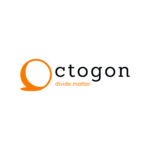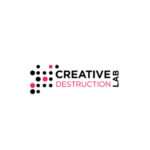
Reporting & Publishing
Report
6 toolsStandards
5 toolsJournal
8 toolsStandards
10 toolsREPORTS
In research you can be asked for several types of Reports:
- Research reports (targeted on technical and progress details from a single research project)
- Activity reports (what projects you have worked on, conferences, publications etc.)
- Financial / management reports (required by investors, sponsors of project managers)
Depending on the Center / University they may or may not be standardized.
You can find in the Branding section how you can stand out through a qualitative report.
Below you can find the Reporting standards and some Tips & Tricks.
Scientific Standard:
Scientific conclusion (report)
Tools:


Publishing
The Reporting Tools above and those in the Branding section can also be used when publishing articles in journals.
Below we answer some basic questions.
1. How do I choose the journal?
– choose ISI journals = International Scientific Indexing
– choose the best journals in science and research / the best known in your field
– look for an optimal ratio between notoriety – publication budget
2. Where do I publish the article?
– science and research journals
– journals / websites / blogs of major universities, research centers or international professional organizations
– scientific database platforms
– publications / websites / blogs of major international institutions (UN, NATO, EU, ASEAN)
– journals / websites / blogs of top companies in your field, which invest in science and research
– blogs, websites, social media pages of the science and research communities
– personal social media profiles
3. What are the publishing standards?
Depending on where you publish, you must comply with various specific standards.
Regarding publishing in magazines and scientific journals, I check directly with the journal I want to publish in, to see their standards concerning the article template, formatting, English language conventions (British English versus American English), how the citations are presented, how big should the images and tables be.
The basic standards in any scientific publication are:
1. utility and relevance for community (scientific, academic, social etc.)
2. documentation from relevant sources
2. citing the source and the authors
3. synthesizing the essence
4. short and clear presentation
5. the use of logical arguments and concrete scientific proofs
6. language accessibility
7. photo / video / animation support
4. How much does it cost to publish an article?
It varies from publication to publication. There are journals in which it is free to publish and some in which it is very expensive. You can find the costs and payment conditions on the journal’s website.
Price is not the main criterion for choosing a publication.
5. What do I do if no one accepts my article?
Although it is an extreme situation, it can happen when:
1. your University / Faculty / Research Center are not relevant enough in the field
2. you have not worked with any renowned researcher (coordinator, mentor, partner, colleague)
3. the chosen topic is not of interest to the community
4. your study does not bring any new conclusions / approaches in the field
We have prepared some Type & Tricks in the Branding and Management sections.
TOOLS
Google Docs + Sciwheel (F1000)
Word + EndNote
For a report or article with video support read our article Multimedia_R.
publish
publish as much and in as many places as possible!
promote
tell people about your work and activity!
portfolio
make a portfolio and update it frequently! Put it in plain sight!
DON’T FORGET!
Not only publishing is important, but especially how many other people cite your article.












